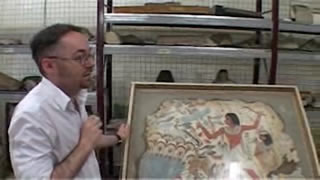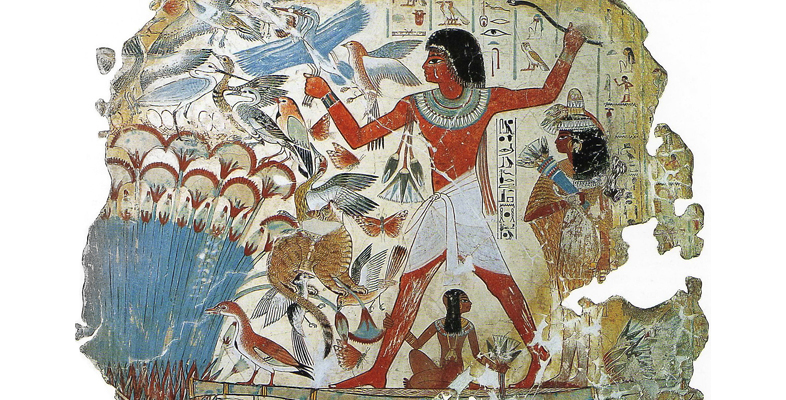1.3 Artistic authors
A second key feature concerns the point that when we think of art, we immediately have to think about who makes it. That is, we have to consider the identity of the artist. By this, we do not just mean ‘male’ or ‘female’, ‘white’ or ‘black’, but what kind of artist this is: a ‘modernist’; a ‘postmodernist’; a ‘pre-modernist’, even. For each of these leads to a radically different relationship between the work of art and its spectator.
Watch this video in which Richard Parkinson and Paul Wood talk about the artists who painted Nebamun’s tomb-chapel.

In our post-Romantic culture, we tend to conceive artistic authors in resolutely individual terms. One traditional idea associated with the concept of the artist (an idea very much contested today), is that of the ‘genius’. A related series of factors, again now subject to academic challenge but together constituting something like a ‘commonsense’ of the notion of the artist, include ideas of ‘creativity’, ‘sincerity’, ‘originality’, ‘authenticity’ .
Clearly this idea does not fit very well with, say, a Renaissance workshop. Not that this prevents certain Renaissance ‘masters’ of workshops being considered as paradigms of the artist (Titian in Italy, Cranach in Northern Europe, are cases in point). But it gets more difficult when we go back to medieval times, and the names of workshop masters tend not to be known to us. And it gets very difficult indeed when we encounter cultures whose conception of the individual, of the individual’s relation to society, let alone of ideas of creativity – not to mention self-expression – are radically dissimilar from ours.
There is no point bringing to bear the criteria one would employ to appreciate a seventeenth-century painting by Le Brun to a late nineteenth-century painting by Van Gogh. Likewise, there is no point applying the criteria one would bring to the Van Gogh to a contemporary installation by Louise Bourgeois. So in a world where Tracey Emin is an artist (a fully accredited member of the Royal Academy), in what sense are the makers of Nebamun’s tomb-chapel ‘artists’?
